Dr. Vivien Thomas is a legend of cardiac care — here’s the pulse-pounding tale of the high school-educated heart surgeon
With his dreams of medical school dashed by the Great Depression, Tennessee carpenter Vivien Thomas became one of the world’s most influential cardiac surgeons.
Dr. Vivien Thomas was born with the skill to mend broken hearts.
Armed with the brain of a scientist and the hands of a craft carpenter, he stands today as one of the world’s most influential cardiac surgeons.
Thomas never attended medical school. He couldn’t even afford college.
But in 1944, he directed one of the landmark procedures in the history of heart medicine.
Thomas guided his mentor, Dr. Alfred Blalock, in the first successful operation to repair the heart of a baby suffering Tetralogy of Fallot – better known as blue-baby syndrome.
"Blalock knew what he had, and what he had was a Michael Jordan of surgery in his lab," said Dr. Koco Eaton, Thomas’ nephew, in a telephone interview with Fox News Digital.
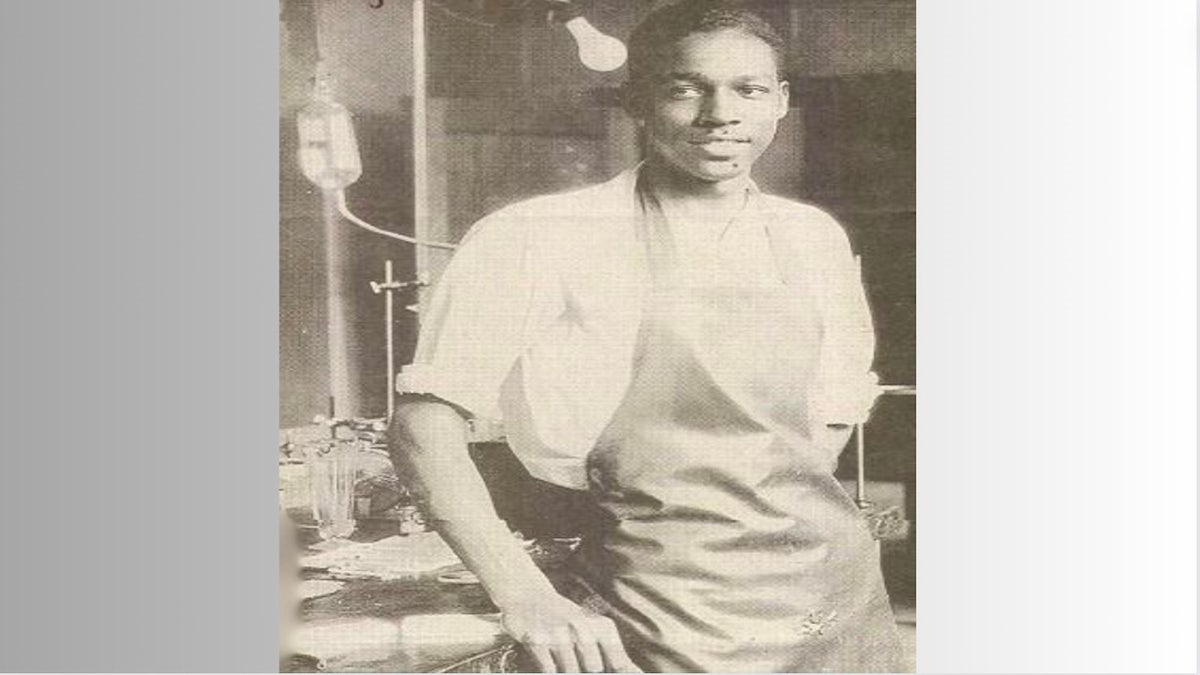
Vivien Thomas as a young research assistant. (Public Domain, via Wikimedia Commons, courtesy Sisters by Heart)
Eaton is the team physician for the Tampa Bay Rays of Major League Baseball.
Dr. Blalock was the chief of surgery at Johns Hopkins University School of Medicine, one of the nation’s most renowned doctors.
Yet he entrusted his career, the future of cardiac surgery and the life of the 18-month-old baby to the direction of a former carpenter with a high-school diploma.
"What he had was a Michael Jordan of surgery in his lab."
Eaton said his "humble" uncle never discussed his career at the forefront of cardiac surgery.
He only learned of Thomas’ prestige when his uncle volunteered to drive him to his medical school interview at Johns Hopkins in the early 1980s.
Thomas’ portrait hung on the wall. He was greeted warmly, even reverently, by school staff.
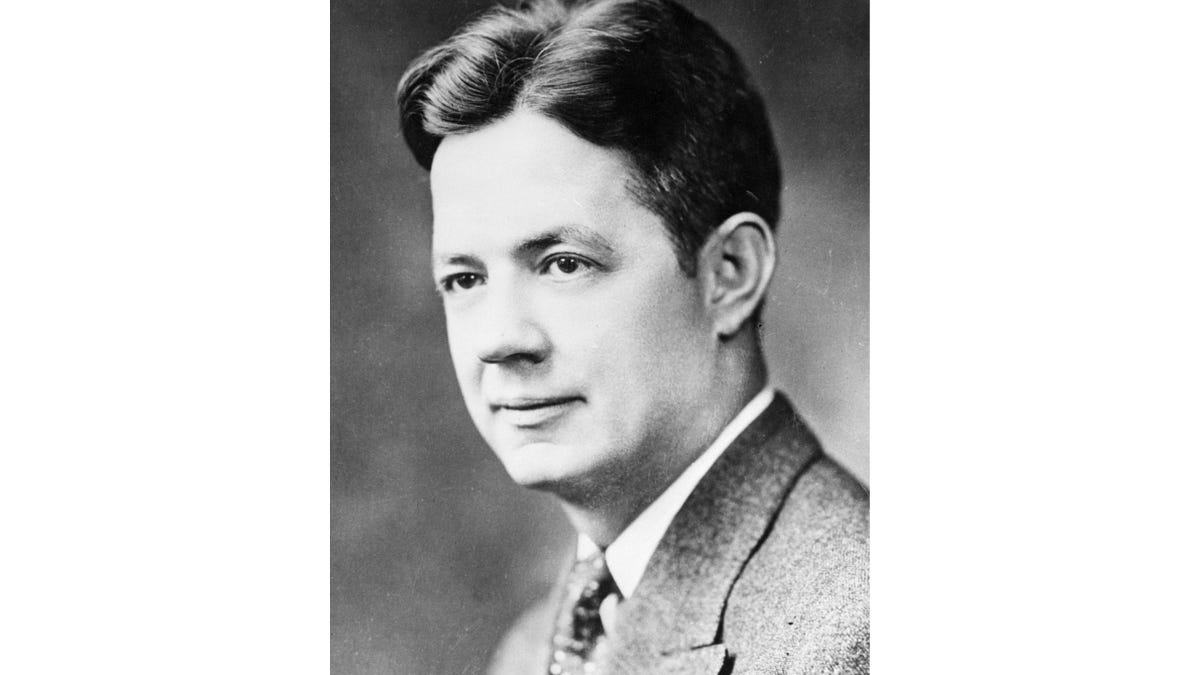
Dr. Alfred Blalock in 1945, chief surgeon at John Hopkins Hospital in Baltimore. (Getty Images)
Eaton grew up attending July 4th family cookouts at Thomas’ Baltimore, Maryland home.
Only after walking in the shadow of his uncle did Eaton realize there was something special about the man sweating over the grill on Independence Day.
"The tongs he used to flip the hot dogs and hamburgers were modified surgical clamps he designed himself," said Eaton.
Thomas had the audacity to build a better spatula.
He also had the talent to teach the world's best surgeons how to stitch new life into the dying hearts of infants.
Postdoctoral researcher paid as a janitor
Vivien Theodore Thomas was born on Aug. 29, 1910 to Willard Maceo and Mary Alice (Eaton) Thomas in Lake Providence or New Iberia, Louisiana.
MEET THE AMERICAN WHO TAUGHT THE TUSKEGEE AIRMEN TO FLY: PIONEER PILOT CHARLES ‘CHIEF’ ANDERSON
He was raised in Nashville, Tennessee, graduating with honors from Pearl High School in 1929.
He worked as a carpenter and harbored dreams of attending college and then medical school.

The front page of the Brooklyn Daily Eagle newspaper with the headline, "Wall St. In Panic As Stocks Crash," published on the day of the initial Wall Street Crash of "Black Thursday," Oct. 24, 1929. (FPG/Hulton Archive/Getty Images)
The world had different ideas. The stock market crash of 1929 wiped out his college savings, Thomas wrote in his autobiography.
He instead found work as a research assistant for Dr. Blalock at Vanderbilt University School of Medicine.
He proved an intuitive scientist and surgeon.
"Thomas rapidly mastered complex surgical techniques and research methodology."
"Thomas rapidly mastered complex surgical techniques and research methodology," the school writes in an online biography.
Because of "institutional racism," the institution admits today, "Thomas was classified, and paid, as a janitor, despite the fact that by the mid-1930s he was doing the work of a postdoctoral researcher in Blalock’s lab."
Still, Thomas’ genius could not be contained by title or numbers on a paystub.
Because of his mechanical aptitude, said Eaton, "he could take Blalock’s ideas and make them a reality."
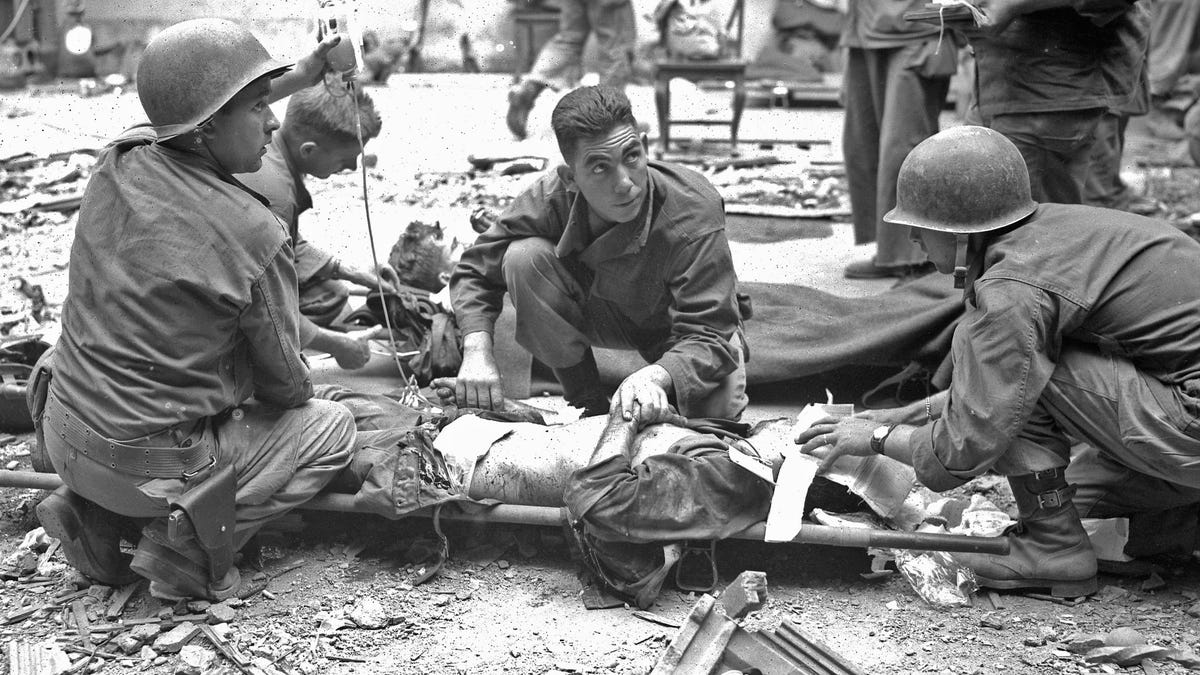
Research by Dr. Blalock and Vivien Thomas into the trauma caused by Crush syndrome is credited with saving thousands of lives in World War II. (HUM Images/Universal Images Group via Getty Images)
German bombing raids over the United Kingdom in the early days of World War II, meanwhile, amplified the need to address a phenomenon known as Crush syndrome.
Crushing injuries to limbs set off a chain reaction in the body that caused heart failure.
Thomas "and Blalock did groundbreaking research into the causes of hemorrhagic and traumatic shock," Vanderbilt reports.
MEET THE AMERICAN WHO INSPIRED THE NATION IN TWO WORLD WARS: CHRISTIAN SOLDIER SGT. ALVIN YORK
"This work later evolved into research on Crush syndrome and saved the lives of thousands of soldiers on the battlefields of World War II."
Blalock was offered the position of chief of surgery at his alma mater, Johns Hopkins, in 1941.
He insisted his gifted research partner make the move with him.
"Blalock and Thomas began experimental work in vascular and cardiac surgery, defying medical taboos against operating upon the heart," Vanderbilt adds.
Legendary day in medicine
Ellen Saxon was just 18 months old, suffering from a fatal heart defect commonly known as blue baby syndrome, when she was presented on a surgery table before Dr. Blalock.
It was Nov. 29, 1944, a landmark day in the history of heart surgery.
"Up to that day, most infants and children with Tetralogy of Fallot had in fact no hope for cure," Johns Hopkins writes in its online account of the event.

Vivien Thomas helped pioneer the "blue baby" operation, an innovative development in the history of cardiac surgery, Nov. 1944. (Alan Mason Chesney Medical Archives, courtesy Johns Hopkins University)
But Thomas had "perfected" the technique to repair the defective hearts, Eaton said, during hundreds of demonstrations and experiments he performed on dogs.
The exercises revealed that new devices were needed to make the surgery successful. Thomas conceived, designed and crafted them.
Among his innovations was a clamp of exact precision that allowed two tiny blood vessels to be sewn together.
"It was the first time you were sewing blood vessels together that are the size of angel pasta."
"The clamp had to stop the flow of blood, but not damage the delicate tissue," said Eaton.
The plan was for Dr. Blalock to practice on the animals using Thomas' techniques before operating on a human infant.
Baby Ellen’s condition quickly worsened. She was rushed into the operating room — Blalock leading the surgical team, Thomas observing from a gallery.
Eaton describes the dramatic events that followed.
MEET THE AMERICAN WHO SERVED AS THE MODEL FOR HUCK FINN, 'KINDLY YOUNG HEATHEN' TOM BLANKENSHIP
"It’s a very complex surgery. It was the first time you were sewing blood vessels together that are the size of angel-hair pasta," the doctor said.
Dr. Blalock needed help from the top expert in the field.
"Blalock saw Thomas in the balcony and told him to come down and stand next to him. So Thomas comes down and stands behind and basically tells him, ‘Flip your hand this way, do the stitch the other way, come back with it this way.’"
Thomas had the skills and the knowledge they had yet to learn.
The research assistant, said Eaton, "literally walked Dr. Blalock through the entire surgery."
A Hall of Fame cast of heart doctors witnessed the medical miracle.
Dr. Helen Brooke Taussig, a pioneer of cardiac medicine, had brought the baby to Dr. Blalock's attention and assisted the procedure directed by the lab researcher. Chief resident Dr. William Longmire later helped found the UCLA School of Medicine.
And resident Dr. Denton Cooley entered medical history in 1969 with the first successful implant of an artifical heart in a human.
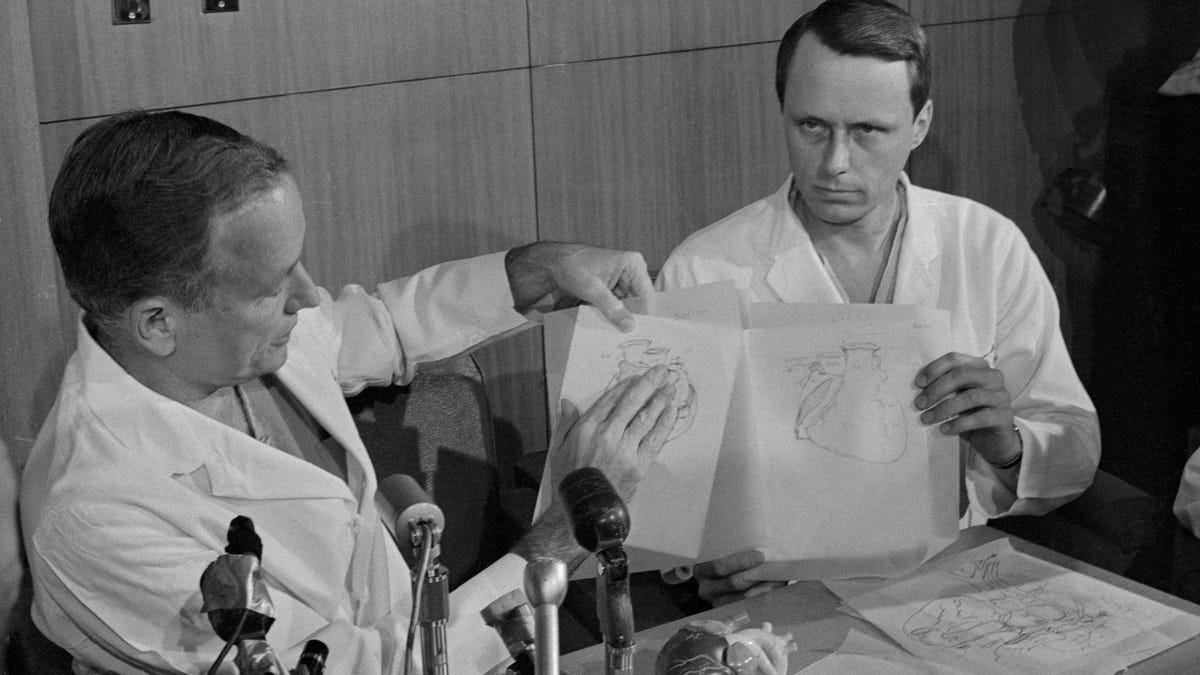
Dr. Denton Cooley, above left, speaks at a press conference in Houston, Texas, in 1968. He and a team of physicians transplanted the heart of a 15-year-old girl into Everett Thomas, 47, of Phoenix, Arizona. As a resident at Johns Hopkins in 1944, Cooley watched lab researcher Viven Thomas direct a team of leading surgeons in the first successful surgery to repair the defective heart of an infant suffering from blue baby syndrome. (Getty Images)
Thomas did not have the title and the pedigree of the others in the operating room.
But he had the skills and the knowledge they had yet to learn.
"Even if you’d never seen surgery before, you could do it because Vivien made it look so simple," Cooley said 45 years later in an interview with Washingtonian magazine.
The surgery caused an immediate sensation in the medical world and in popular media. But Blalock and Taussig got all the credit. The procedure was actually named the Blalock-Taussig Shunt.
The best surgeon in the room was in danger of being forgotten.
The pride of surgeons
"He had a great mind and great hands and that is a rare combination," said Dr. Eaton of his uncle. "He was a genius."
Thomas finally received an honorary doctorate from Johns Hopkins in 1976, and joined the faculty as a surgery instructor that same year, before retiring in 1979.
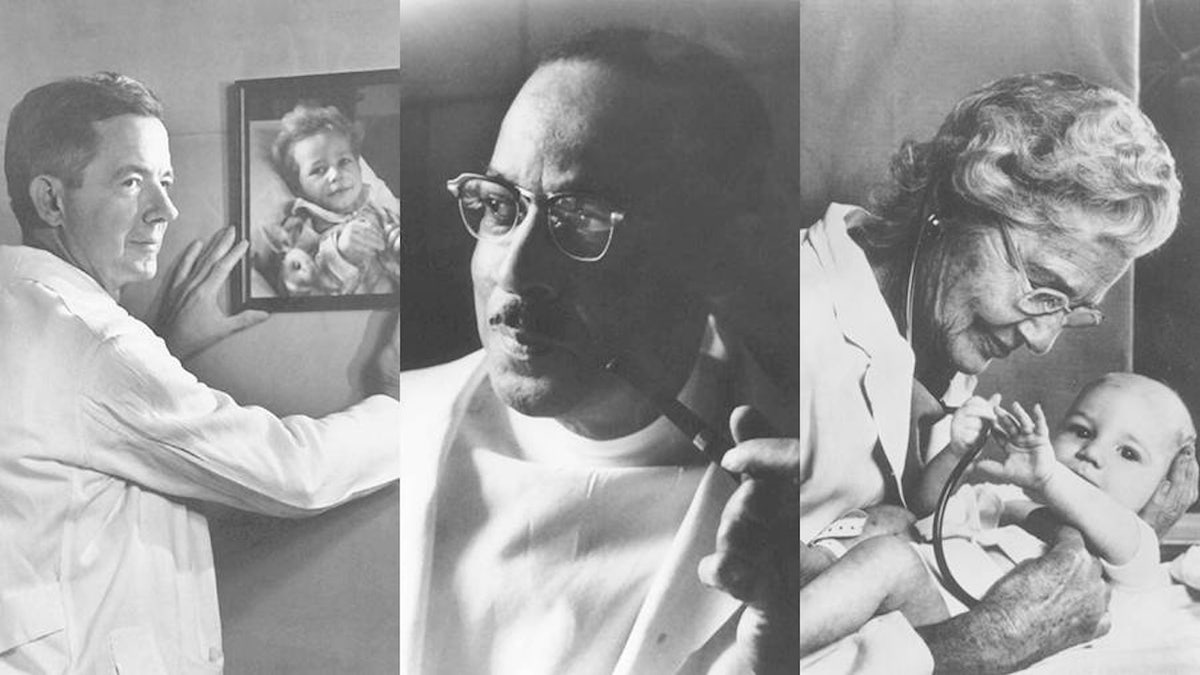
Without proper education or licensing, Thomas (center) had to instruct his research partner, Dr. Alfred Blalock (left) step-by-step through the first human "blue baby" operation. Assisting in this process was pediatric cardiologist Helen Taussig (right). (Alan Mason Chesney Medical Archives, courtesy Johns Hopkins University)
"Today, in operating rooms all over the world, there are great surgeons performing life-saving surgical procedures who received their training from Vivien Thomas," Morehouse School of Medicine writes in an online testament.
Vivien Thomas suffered from pancreatic cancer and died on Nov. 26, 1985 in Baltimore. He was 75 years old.
In his later years, Dr. Thomas worked on his autobiography. "Partners of the Heart: Vivien Thomas and His Work with Alfred Blalock" was published soon after his death.
CLICK HERE TO SIGN UP FOR OUR LIFESTYLE NEWSLETTER
The acclaim he deserved has since come his way.
His book and dramatic story inspired HBO’s Emmy Award-winning film "Something the Lord Made" and the PBS documentary "Partners of the Heart."
"A lot of people say with pride today, ‘I was taught surgery by Vivien Thomas.’"
The lifesaving procedure he demonstrated under lifesaving pressure in 1944 has since been renamed the Blalock-Taussig-Thomas Shunt.
The operation has saved the lives of thousands of babies from what was once a death-sentence heart defect.

Vivien Thomas, left, as a young research assistant. He directed top doctors on how to perform a landmark heart surgery on an infant in 1944. (Public Domain, courtesy Sisters by Heart; Alan Mason Chesney Medical Archives, courtesy Johns Hopkins)
Thomas missed his chance to go to medical school; but fate apparently planned something more profound for him.
"He probably wouldn't have done all this work if he had attended medical school," said Dr. Eaton.
"Things worked out for him and for the betterment of mankind. We all benefited from his work."
CLICK HERE TO GET THE FOX NEWS APP
The beaming nephew added, "A lot of people say with pride today ‘I was taught surgery by Vivien Thomas.’"
To read more stories in this unique "Meet the American Who…" series from Fox News Digital, click here.
For more Lifestyle articles, visit www.foxnews.com/lifestyle.

